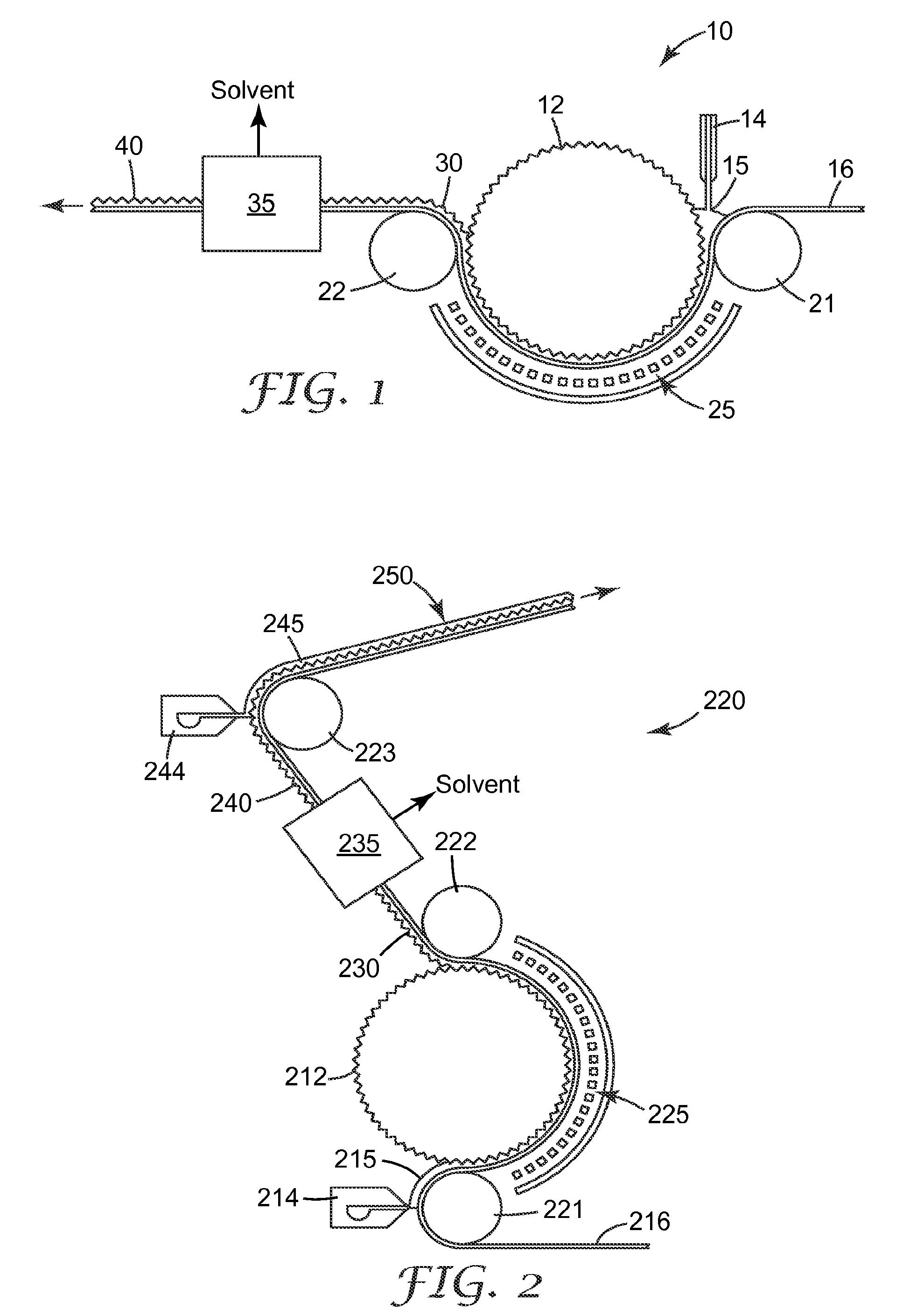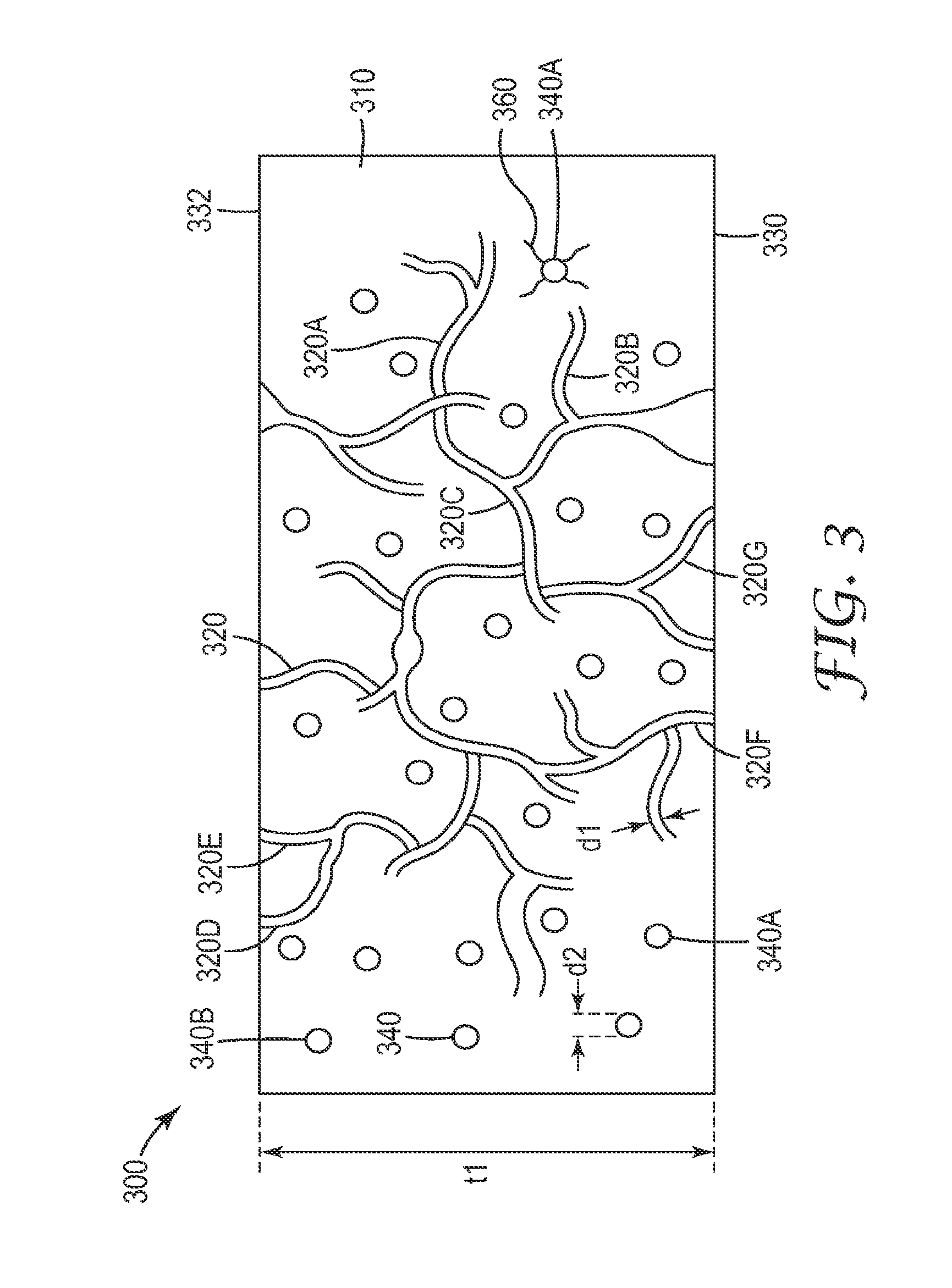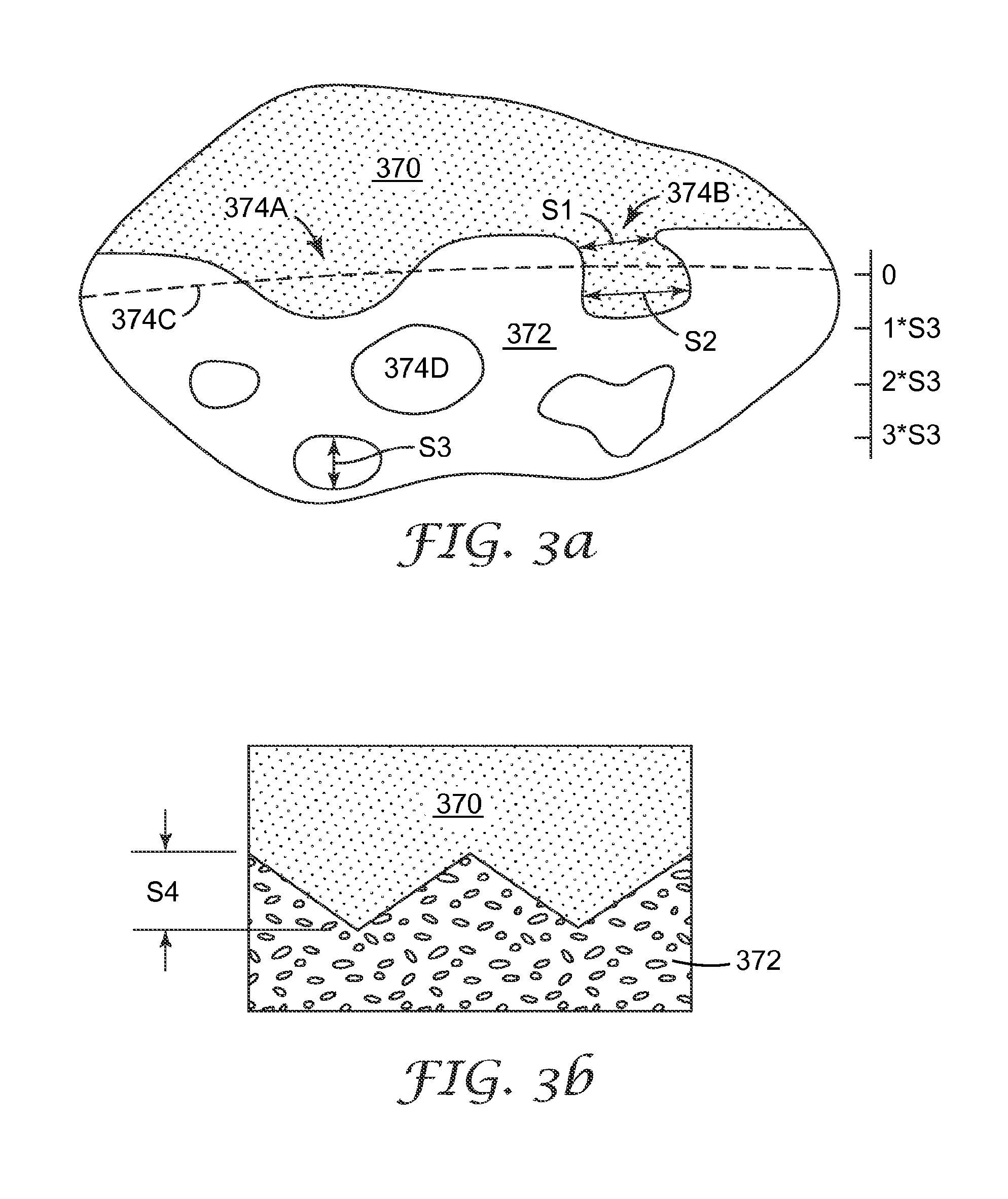Optical films with microstructured low refractive index nanovoided layers and methods therefor
- Summary
- Abstract
- Description
- Claims
- Application Information
AI Technical Summary
Benefits of technology
Problems solved by technology
Method used
Image
Examples
examples section 1
1. Reactive Nanoparticles
[0143]In a 2 liter three-neck flask, equipped with a condenser and a thermometer, 960 grams of IPA-ST-UP organosilica elongated particles (available from Nissan Chemical Inc., Houston, Tex.), 19.2 grams of deionized water, and 350 grams of 1-methoxy-2-propanol were mixed under rapid stirring. The elongated particles had a diameter in a range from about 9 nm to about 15 nm and a length in a range of about 40 nm to about 100 nm. The particles were dispersed in a 15.2 % wt IPA. Next, 22.8 grams of Silquest A-174 silane (available from GE Advanced Materials, Wilton, Conn.) was added to the flask. The resulting mixture was stirred for 30 minutes.
[0144]The mixture was kept at 81 degrees centigrade for 16 hours, and then allowed to cool to room temperature. Next, about 950 grams of solvent were removed from the solution using a rotary evaporator with a 40 degrees centigrade water-bath, resulting in a 41.7 % wt A-174-modified elongated silica clear dispersion in 1-m...
examples section 2
7. Reactive Nanoparticles
Reactive Nanoparticle Dispersion 1
Surface Modification of IPA-ST-UP (A174-Treated IPA-ST-UP)
[0161]In a 2 liter three-neck flask, equipped with a condenser and a thermometer, 960 grams of IPA-ST-UP organosilica elongated particles (available from Nissan Chemical Inc., Houston, Tex.), 19.2 grams of deionized water, and 350 grams of 1-methoxy-2-propanol were mixed under rapid stirring. The elongated particles had a diameter in a range from about 9 nm to about 15 nm and a length in a range of about 40 nm to about 100 nm. The particles were dispersed in a 15.2 % wt IPA. Next, 22.8 grams of Silquest A-174 silane (available from GE Advanced Materials, Wilton, Conn.) was added to the flask. The resulting mixture was stirred for 30 minutes.
[0162]The mixture was kept at 81 degrees centigrade for 16 hours, and then allowed to cool to room temperature. Next, about 950 grams of solvent were removed from the solution using a rotary evaporator with a 40 degrees centigra...
examples section 3
12. Reactive Nanoparticles
A-174 Treated Silica Nanoparticles
[0199]In a 2 liter three-neck flask, equipped with a condenser and a thermometer, 960 grams of IPA-ST-UP organosilica elongated particles (available from Nissan Chemical Inc., Houston, Tex.), 19.2 grams of deionized water, and 350 grams of 1-methoxy-2-propanol were mixed under rapid stirring. The elongated particles had a diameter in a range from about 9 nm to about 15 nm and a length in a range of about 40 nm to about 100 nm. The particles were dispersed in a 15.2% wt IPA. Next, 22.8 grams of Silquest A-174 silane (available from GE Advanced Materials, Wilton, Conn.) was added to the flask. The resulting mixture was stirred for 30 minutes.
[0200]The mixture was kept at 81° C. for 16 hours. Next, the solution was allowed to cool down to room temperature. Next, about 950 grams of the solvent in the solution were removed using a rotary evaporator under a 40° C. water-bath, resulting in a 40 wt % A-174-modified elongated silica...
PUM
| Property | Measurement | Unit |
|---|---|---|
| Fraction | aaaaa | aaaaa |
| Fraction | aaaaa | aaaaa |
| Depth | aaaaa | aaaaa |
Abstract
Description
Claims
Application Information
 Login to View More
Login to View More - Generate Ideas
- Intellectual Property
- Life Sciences
- Materials
- Tech Scout
- Unparalleled Data Quality
- Higher Quality Content
- 60% Fewer Hallucinations
Browse by: Latest US Patents, China's latest patents, Technical Efficacy Thesaurus, Application Domain, Technology Topic, Popular Technical Reports.
© 2025 PatSnap. All rights reserved.Legal|Privacy policy|Modern Slavery Act Transparency Statement|Sitemap|About US| Contact US: help@patsnap.com



